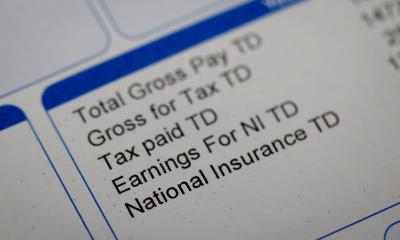
Earners pay National Insurance contributions (NICs) on their earnings. Employers pay employer contributions for each employee and collect and forward their employees' contributions.
Paying NICs ensures the earner's entitlement to various benefits, including the state pension. Employers should understand their National Insurance obligations and the opportunities to reduce the cost.
There are four classes of NICs (previously five). Employers are only concerned with Class 1, 1A and sometimes 1B. Class 4 NICs apply to the self-employed. Class 3 are voluntary contributions paid by those who may not currently have to pay NICs or are not entitled to receive National Insurance credits.
The self employed also paid weekly Class 2 NICs until they were abolished at the end of the 2023/24 tax year.
Employers must ensure their payroll software and RTI reporting is kept up to date so that the correct NICs are processed and reported to HMRC.
1. Employer contributions
Employers are liable for Class 1, 1A and sometimes 1B.
Employers pay Class 1 NICs for most of their employees
These include:
- company directors;
- casual and part-time workers;
- fixed-term contract workers.
There are thresholds and exceptions where employers' Class 1 NICs are not due
Employers do not make contributions for:
- employees paid less than the Secondary Threshold of £175 per week, £758 per month or £9,100 per year;
- employees under 16;
- employees under 21, on earnings up to the Upper Earnings Limit of £967 per week, £4,189 per month or £50,270 per year;
- apprentices under the age of 25 or veterans, on earnings up to the Upper Earnings Limit of £967 per week, £4,189 per month or £50,270 per year.
Employers' Class 1 NICs are payable at 13.8%
- There is no upper limit on the amount of Class 1 NICs an employer must pay (unlike employee Class 1 NICs).
- This applies to pay above the Secondary Threshold for most employees or above the Upper Earnings Limit for employees under 21 and apprentices under 25.
Employers pay Class 1A NICs at 13.8% on most benefits provided to employees
- NICs on company cars and fuel for private use are paid on the same 'cash equivalent' as the figure used to calculate the employee's tax liability.
- Provision of some benefits by employers is exempt from Class 1A NICs (see Reducing contributions).
- A single annual payment of Class 1B NICs can be made for any expenses or benefits covered by a PAYE settlement agreement with HM Revenue & Customs (HMRC). The same rate applies.
2. Employee contributions
Employees also pay Class 1 NICs
- There is no contribution for pay below the Primary Threshold of £242 a week, £1,048 per month or £12,570 per year.
- Class 1 NICs are payable on payments above the Primary Threshold and up to the Upper Earnings Limit of £967 a week £4,189 per month or £50,270 per year. The rate payable is 8% from 6 April 2024 (12% before 6 January 2024 and 10% between 6 January 2024 and 6 April 2024).
- NICs of 2% is paid on any earnings above the Upper Earnings Limit.
There are special rules for some employees
- Married women and widows who opted for 'reduced liability' pay 5.85% NICs on earnings between the Primary Threshold and Upper Earnings Limit, plus 2% on all earnings above the Upper Earnings Limit.
- Employees with more than one job pay NICs for each job earning over the Primary Threshold. Employees may be able to defer their NICs in at least one of those jobs to reduce their rate from 8% to 2%.
- Those over the state pension age do not pay NICs once they provide their employer with a Certificate of Age Exception. The employer still pays NICs at the full rate.
Self-employed and unemployed
The self-employed now only pay Class 4 NICs. Prior to the 2024/25 tax year both Class 2 and Class 4 NICs were payable
Class 4 NICs are payable on annual profits. The rates are:
- 8% on profits between £12,570 and £50,270.
- 2% on any profits above £50,270.
HMRC collects self-employed NICs at the same time as income tax usually via self assessment
The unemployed and the self employed earning between £6,725 and £12,570 pay no NICs
- Instead they receive 'National Insurance Credits'.
3. Making payments
You must calculate NICs as a percentage of gross pay
- Gross pay is before any PAYE (Pay as You Earn) and pension deductions.
- Gross pay includes wages/salaries, bonus payments, fees, overtime, petrol allowances (unless charged to a company account), profit-related pay and employees' personal expenses such as telephone bills where paid by the employer for the employee.
- You do not normally make contributions on redundancy payments, payments in lieu of notice, termination payments, pensions, meal vouchers, most childcare, expenses or tips not paid by the employer.
- Contributions are still paid if pay continues during sickness or any other absence.
The earnings period is the period since the last pay day, typically a week or a month
- For most directors the earnings period is annual, irrespective of when they are paid. This captures all of a director's earnings.
You deduct tax and NICs every time you pay an employee at the time you pay them
You pay HMRC each month
- This can be done quarterly if your average monthly PAYE, NIC and student loan payments are below £1,500.
- NIC payments must be paid by the 22nd of the month after the month or quarter to which they relate (19th for postal payments).
- Penalties are charged on payments received after the deadline.
4. Filing records with HMRC
Payroll information must be reported to HMRC online
- You must register for HMRC's PAYE Online and submit PAYE reports using compatible software or HMRC's PAYE tools.
- Alternatively, you can use the services of an accountant or payroll bureau.
You must keep records for all staff regardless of how much they earn or how often you pay them
- You will need details of gross pay, PAYE and NICs deducted and any statutory pay you pay (see Entitlements).
- Prepare a payroll record for each employee at the start of the tax year or when they start working for you to record expenses and benefits.
You file a Full Payment Submission every time you pay employees
- You also send an Employer Payment Summary if you need to report reductions in what you have to pay HMRC (for example, if you are reclaiming any statutory payments).
- You send an Employer Payment Summary instead of a Full Payment Submission if you haven't paid any employees in that pay period.
- Depending on the circumstances, you many need to submit other reports to HMRC.
- Penalties are charged on forms received after the deadlines.
There are extra requirements when you take on new employees
You must:
- Ask them for their P45 and National Insurance (NI) number. If the employee does not know their NI number or has never had one, they should contact Jobcentre Plus.
- Gather the information required by HMRC and check the employee's employment situation.
At the end of the tax year you give forms to all employees still working for you
- You give them Form P60, by 31 May.
- You provide a statement or a form P11D, showing the employees' benefits and expenses in the tax year, by 6 July, except for "trivial benefits".
You must keep all P11 forms and pay records for three tax years
5. Reducing contributions
There are a number of ways to reduce your contributions.
Claim the Employment Allowance
- Eligible employers can claim a £5,000 per year allowance.
- The allowance can be claimed when you submit your Employer Payment Summary. The amount of employers' NICs payable will be reduced until the full £5,000 allowance has been used up.
- If you do not claim the full amount, the balance can be claimed against other PAYE taxes you may own.
Structure pay and staffing arrangements so that employees earn just below the NI threshold
- You must pay at least the national minimum wage.
Some taxable 'benefits in kind' are not subject to employer (or employee) NICs
- These include provision of most employer childcare facilities, certain counselling, subsidised meals and light refreshments provided equally to all employees.
- They also include long-service awards (of up to £50 per year for employees with at least 20 years' service) or employer-financed annual parties (costing £150 per head per year). However, payment of cash or cash vouchers is subject to NICs.
Employees can adopt 'employee shareholder' status
- Employee shareholders give up some of their statutory employment rights in exchange for shares in the company.
- The first £3,600 of free shares received by the employee are generally exempt from NI and income tax.
- You pay CGT on gains over £100,000 that you make during your lifetime.
6. Entitlements
Paying NICs entitles you to certain benefits.
You can claim the new state pension of £221.20 per week (£203.85 for 2023/24).
- You can claim this if you reach state pension age on or after 6 April 2016 and have accrued 35 years' NICs or credits.
- If you reached state pension age before this date you will receive the old state pension of £169.50 (£156.20 for 2023/24) a week if you have accrued 30 years' NICs or credits.
- If you reached state pension age before 6 April 2016 and have paid any Class 1 NICs since April 1978, you are also entitled to the Additional State Pension. The amount depends on the NICs made.
- The state pension is reduced if you make fewer contributions.
- The state pension age is gradually rising.
- There is no default retirement age (DRA) and employers can no longer compulsorily retire employees unless they can give a good reason to do so.
You are entitled to statutory sick pay (SSP) if you earn £123 or more per week
- SSP is currently £116.75 a week.
- Employers can opt out providing they pay at least £116.75 a week. Many employers maintain full pay.
- Sick pay is subject to tax and NICs if paid in excess of tax and NIC thresholds.
You may be entitled to statutory maternity, paternity, adoption or shared parental pay
- You need to meet minimum periods of employment, pay Class 1 NICs on earnings over £123 per week and provide your employer with certain details and notice periods about the birth or adoption.
- Statutory maternity pay is paid at 90% of average weekly earnings for the first six weeks and £184.03 a week or 90% of average earnings if lower, for the remaining 33 weeks. Similar entitlements to leave and pay apply to qualifying adoptive parents.
- Qualifying fathers have the right to take two weeks' paid ordinary paternity leave at £184.03 per week or 90% of average earnings if lower.
- Eligible employees are able to opt to take shared parental leave and pay. It is paid at the same statutory rate.
- Many employers pay their employees more than the statutory minimum.
- Large employers can recover 92% of the statutory maternity, paternity and adoption pay paid to their employees. Employers paying less than £45,000 of Class 1 NICs a year can recover 103% of their statutory maternity, paternity or adoption payments.
Signpost
- Find guidance for individuals on GOV.UK.
- Find guidance on PAYE and statutory pay on GOV.UK.
- Make a PAYE enquiry to HMRC (0300 200 3200).
- Check your state pension age through GOV.UK.
- Get an estimate of your future state pension from the Future Pension Centre.


